Echoes of Self is a seven-chapter exploration of memory, identity, and the passage of time in pursuit of my Ikigai, a Japanese concept that translates to “life’s purpose.” Created with a 4×5” large-format camera and the 1800s hand-coated dry plate technique on glass, the self-portraits use natural metaphors to craft a deeply introspective narrative. Each chapter, from Travel Memories, Whispers of Dreams, Silent Horizons, to Ties that Bind and The Pulse of Nature, reveals a different aspect of Schless’s evolving identity and the lingering echoes of his past.
Central to the work is a focus on imperfection, both physically and philosophically. The bubbles, streaks, and light leaks inherent in the dry plate process act as visual metaphors for the fragility of memory and life’s unpredictability. Schless’s slow, deliberate approach mirrors the act of reflection itself, inviting viewers into a quiet space for contemplation.
Using 1800s photographic processes, the photographs symbolize both uncertainty and discovery. Through blending process, metaphor, and performance, Schless presents a body of work that extends beyond autobiography, inviting viewers to find their Ikigai within his meditative self-portraits.
Ton Schless
September 2025
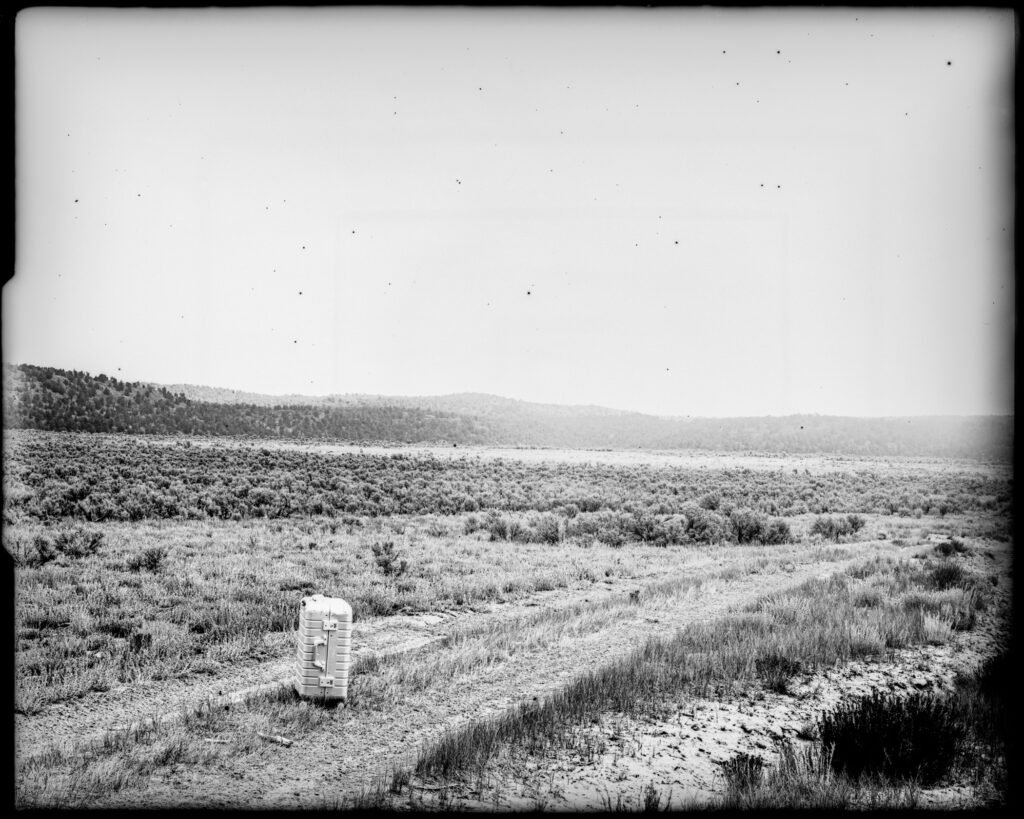
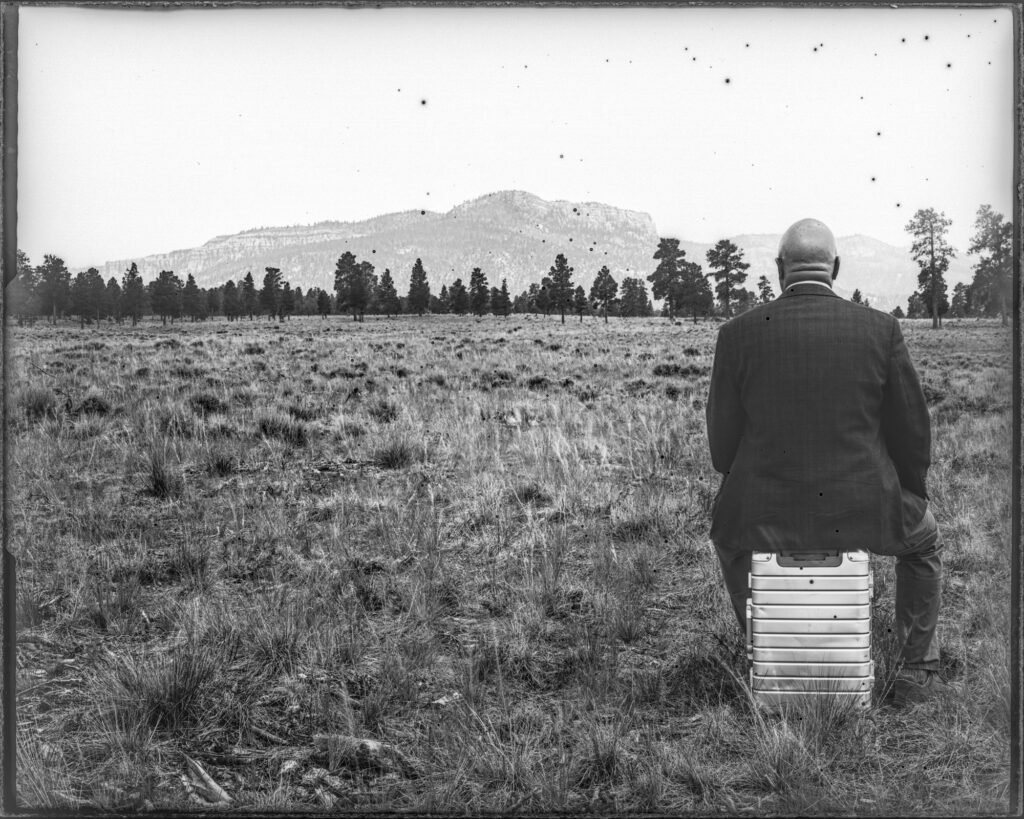
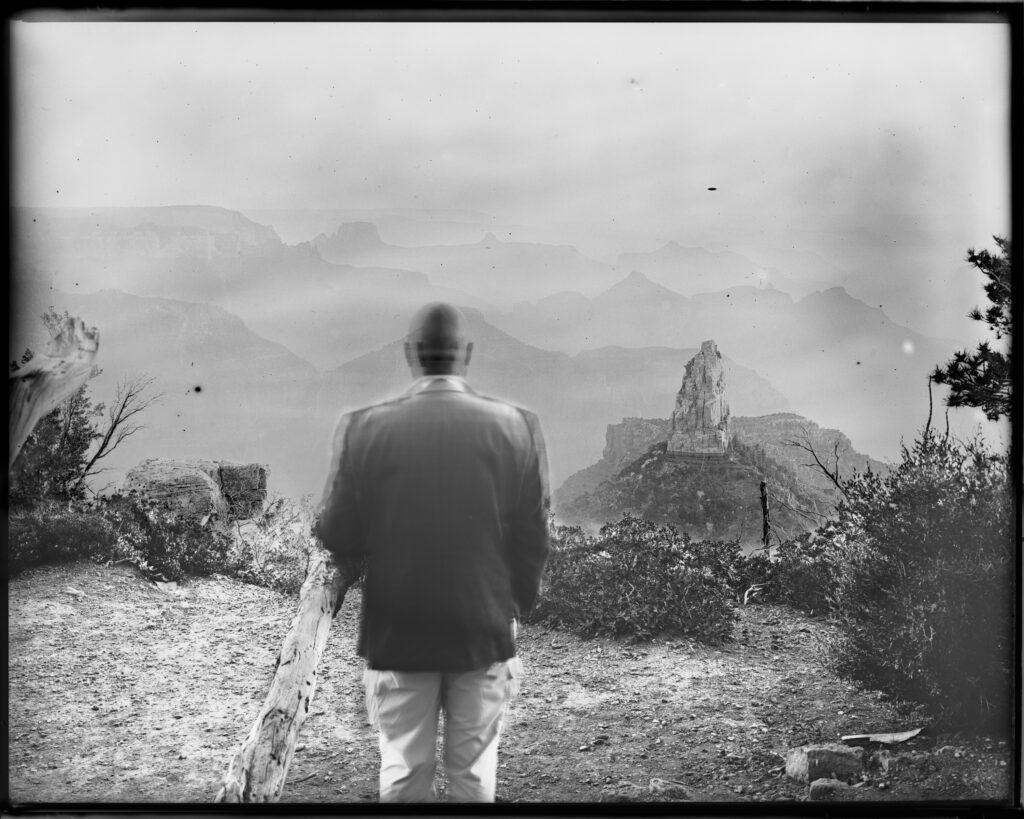

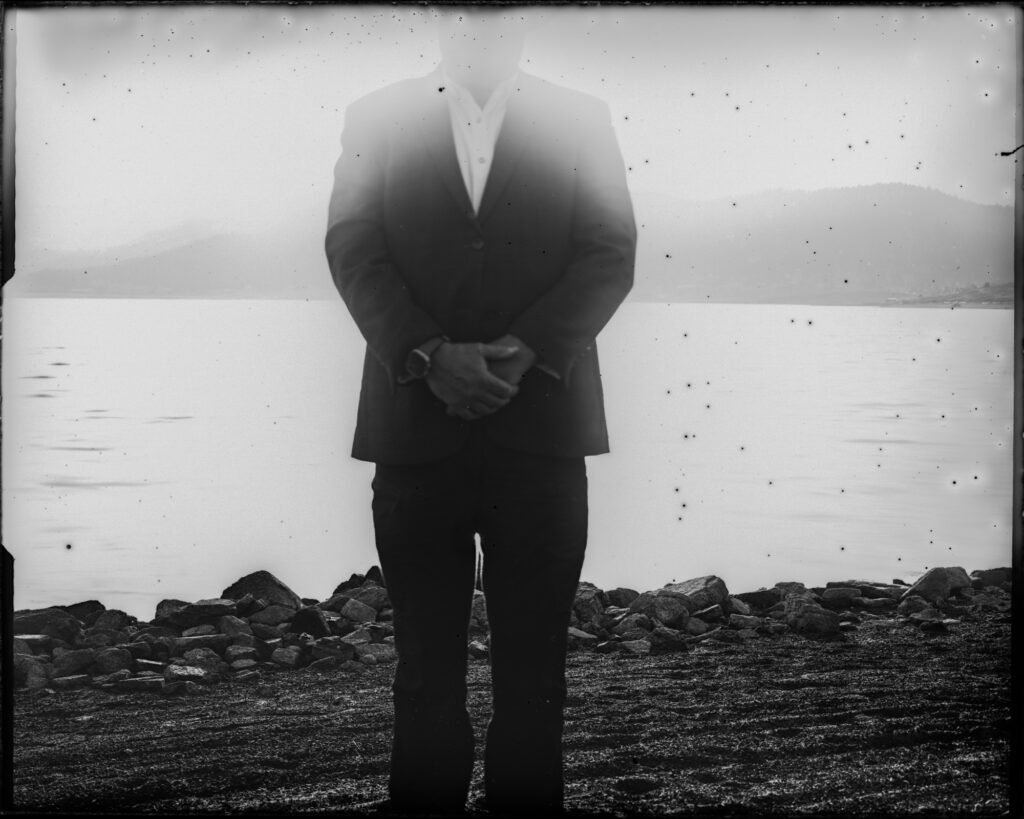
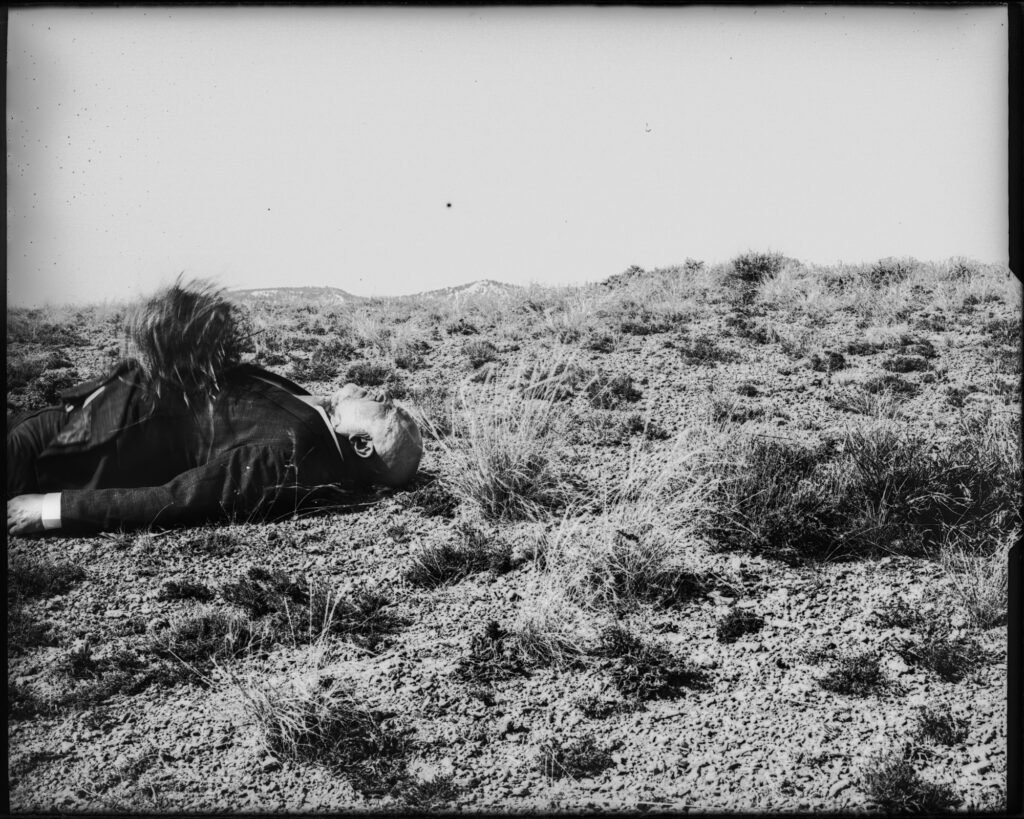
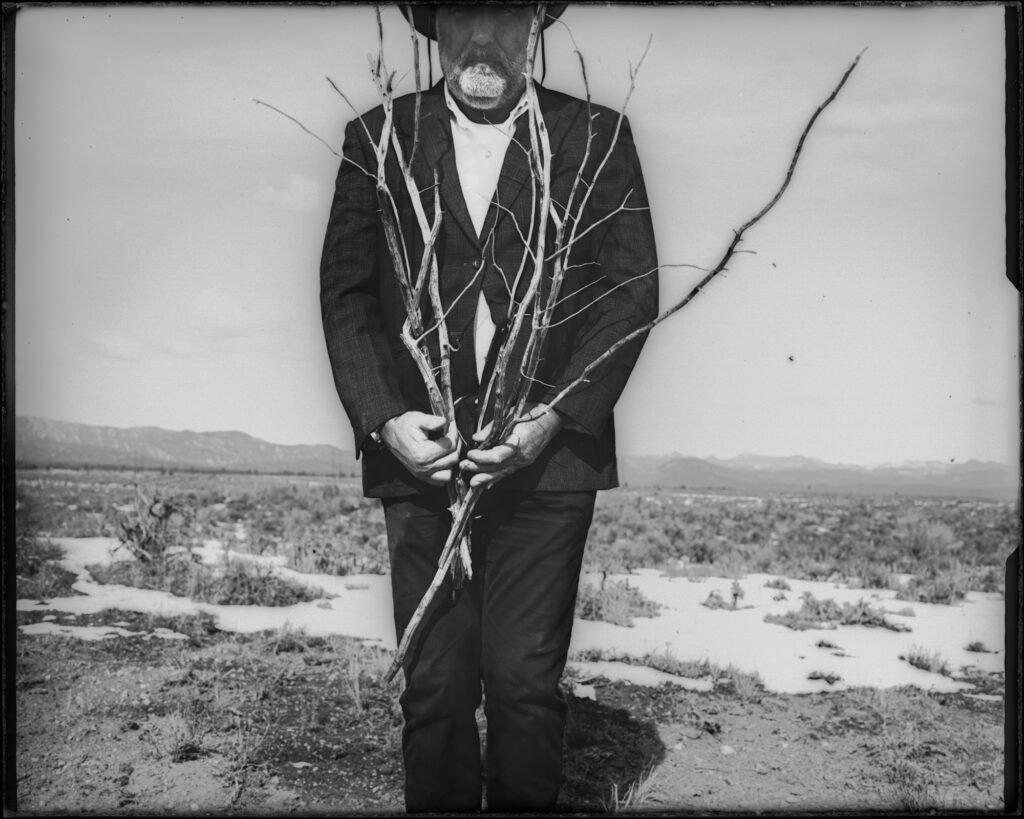
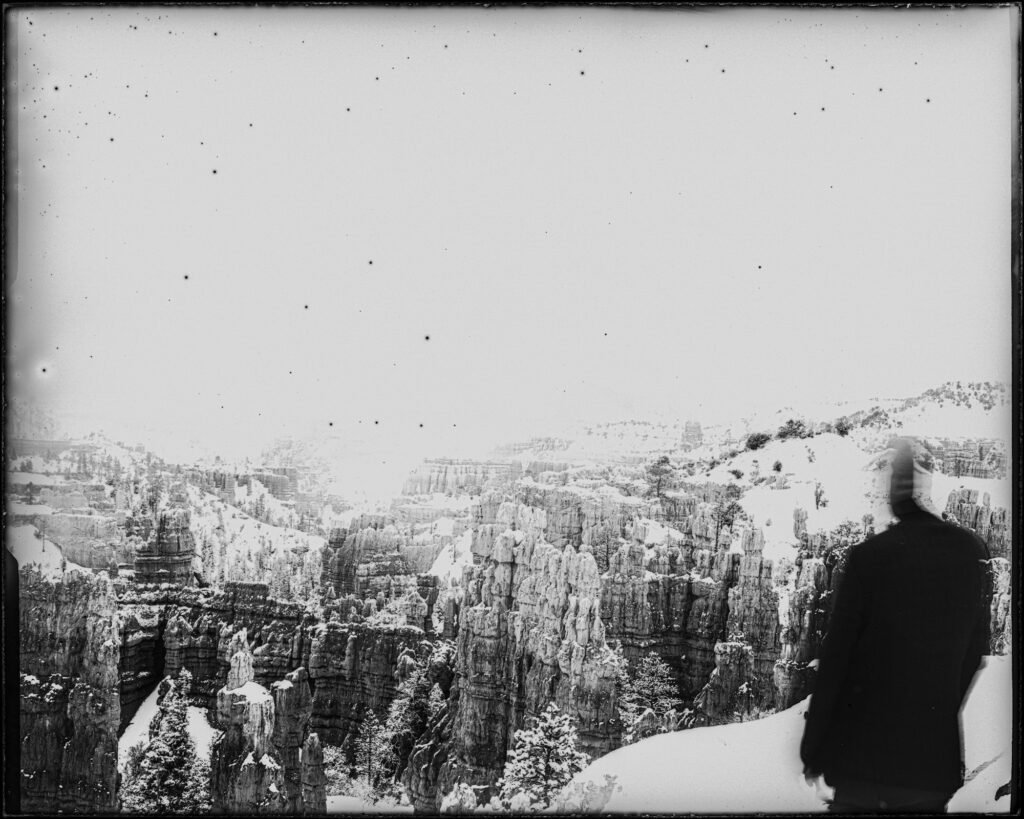

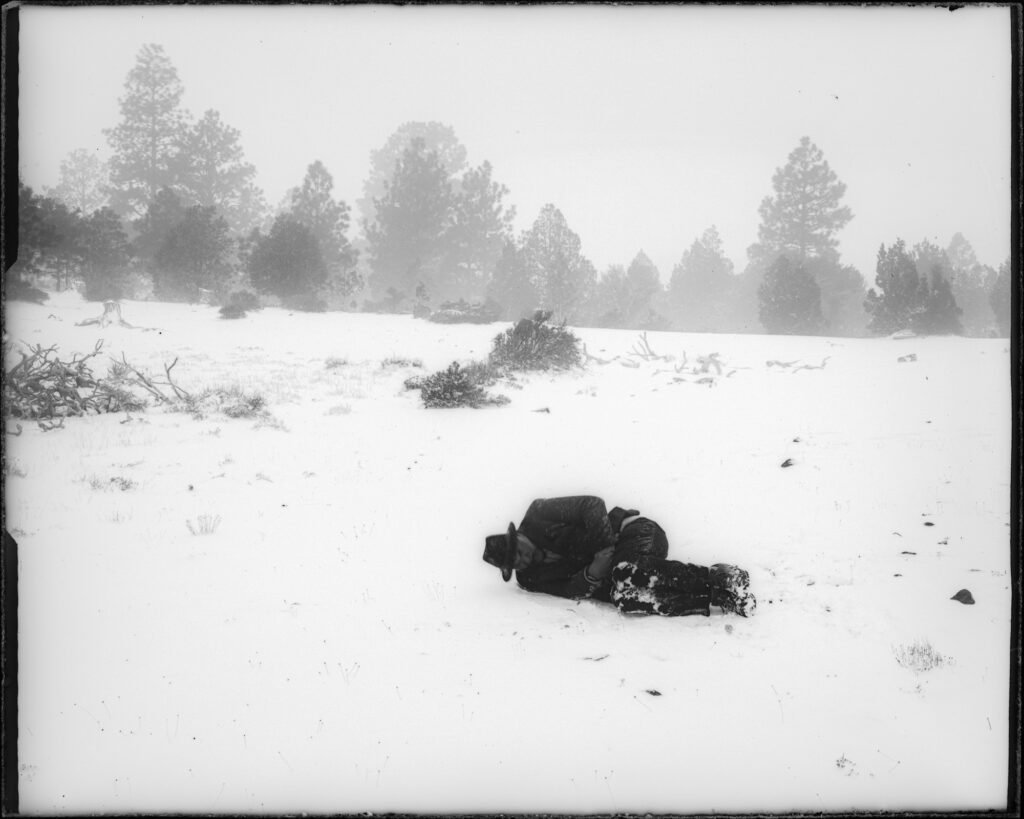
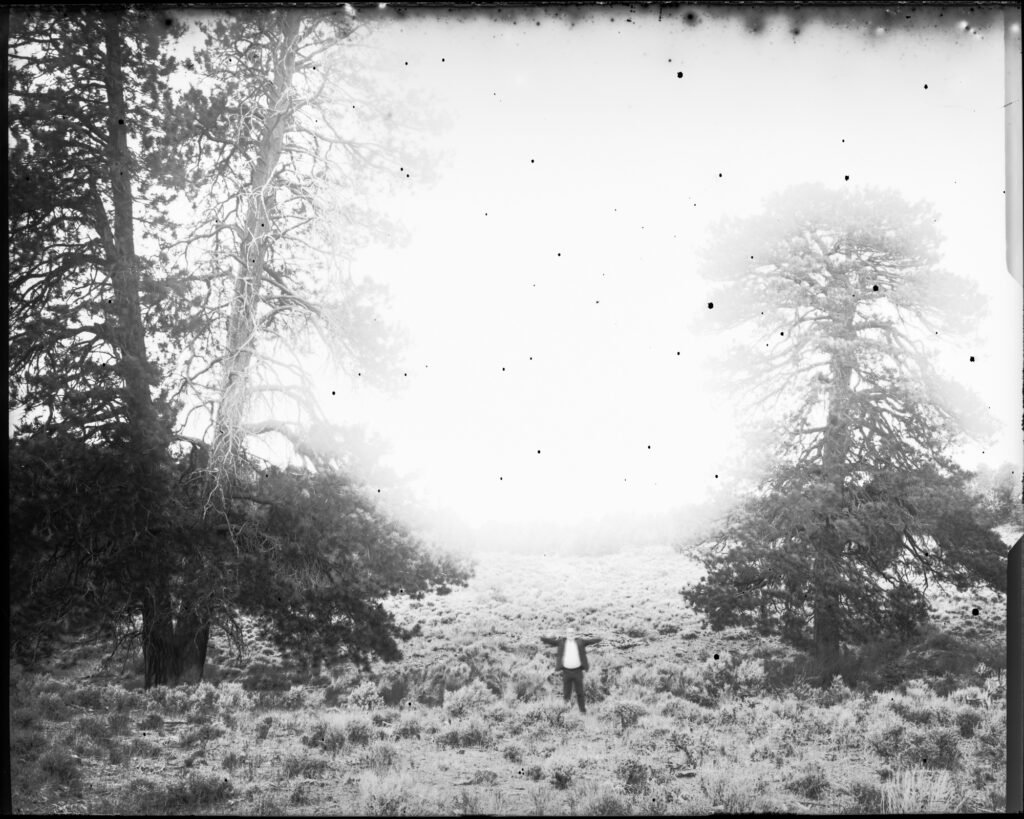
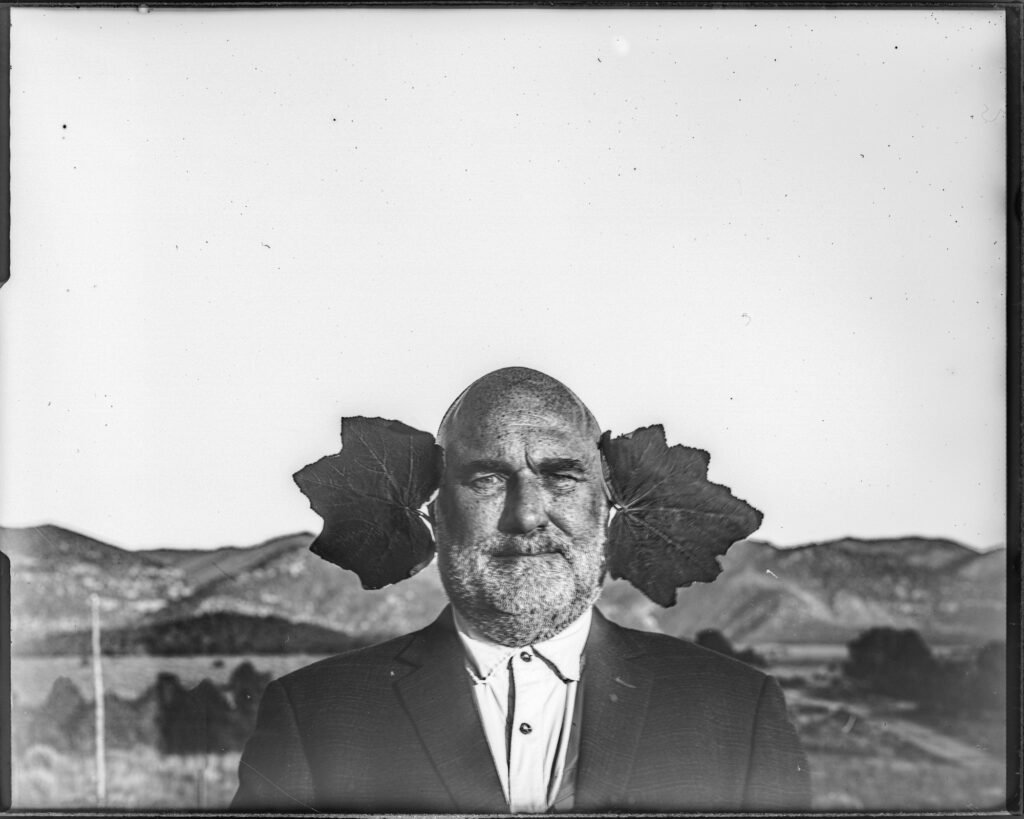
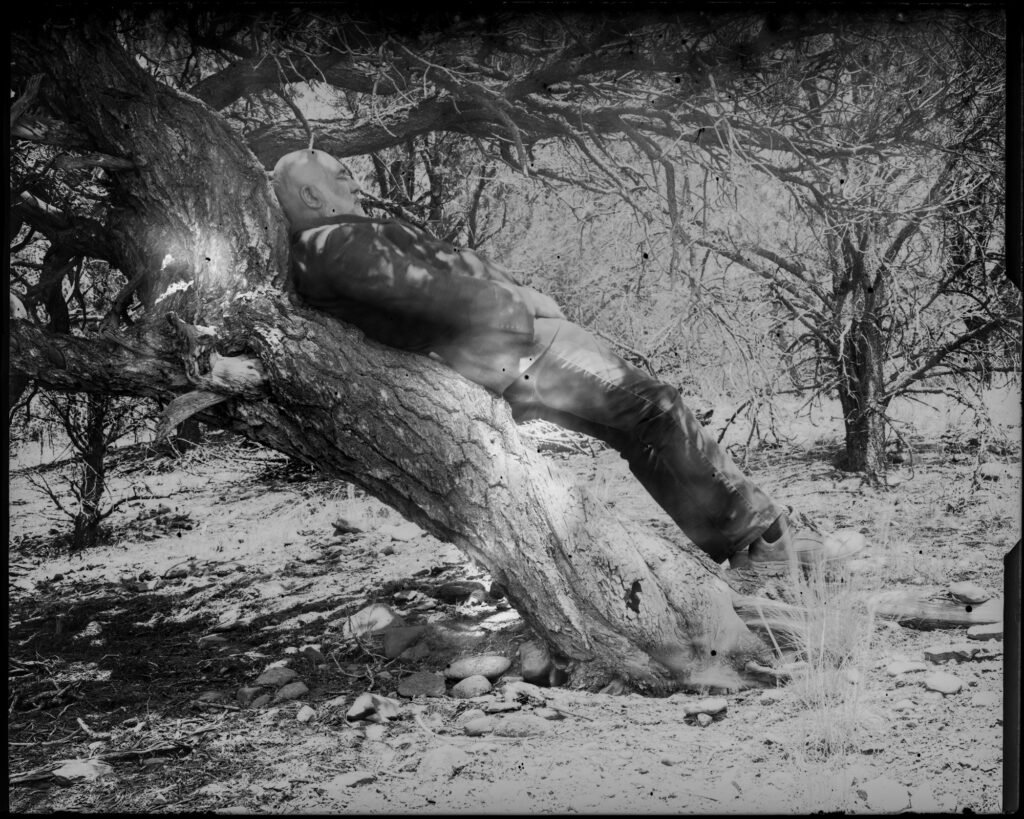
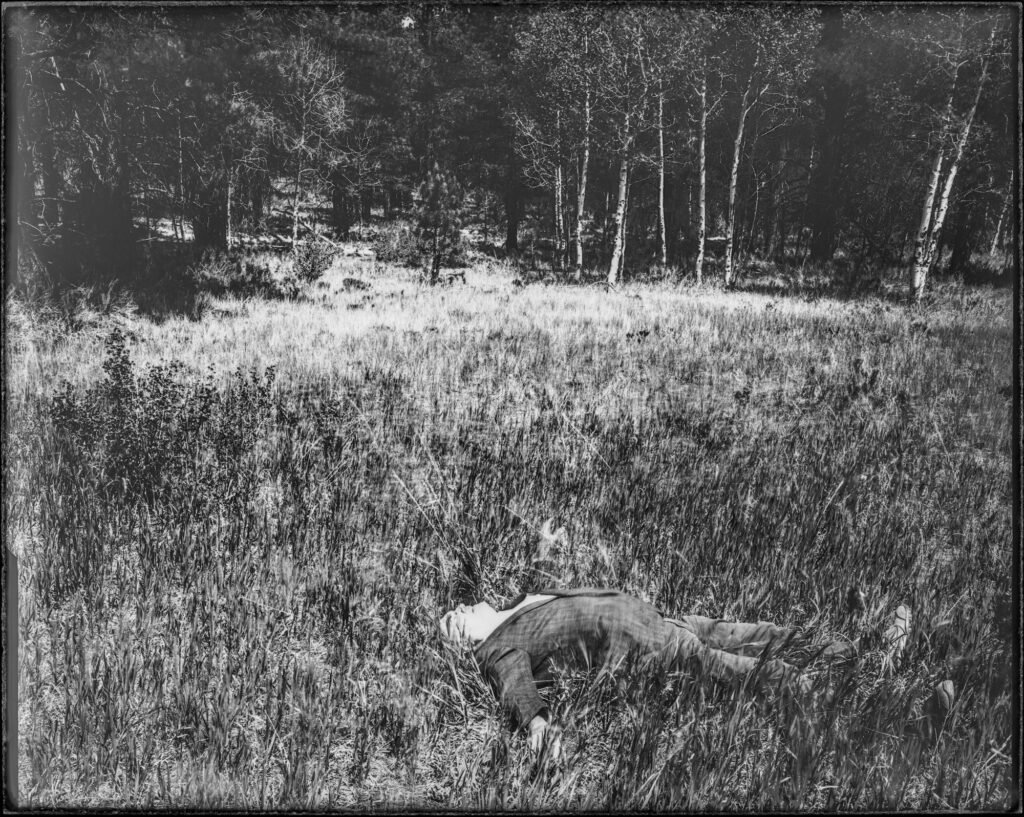
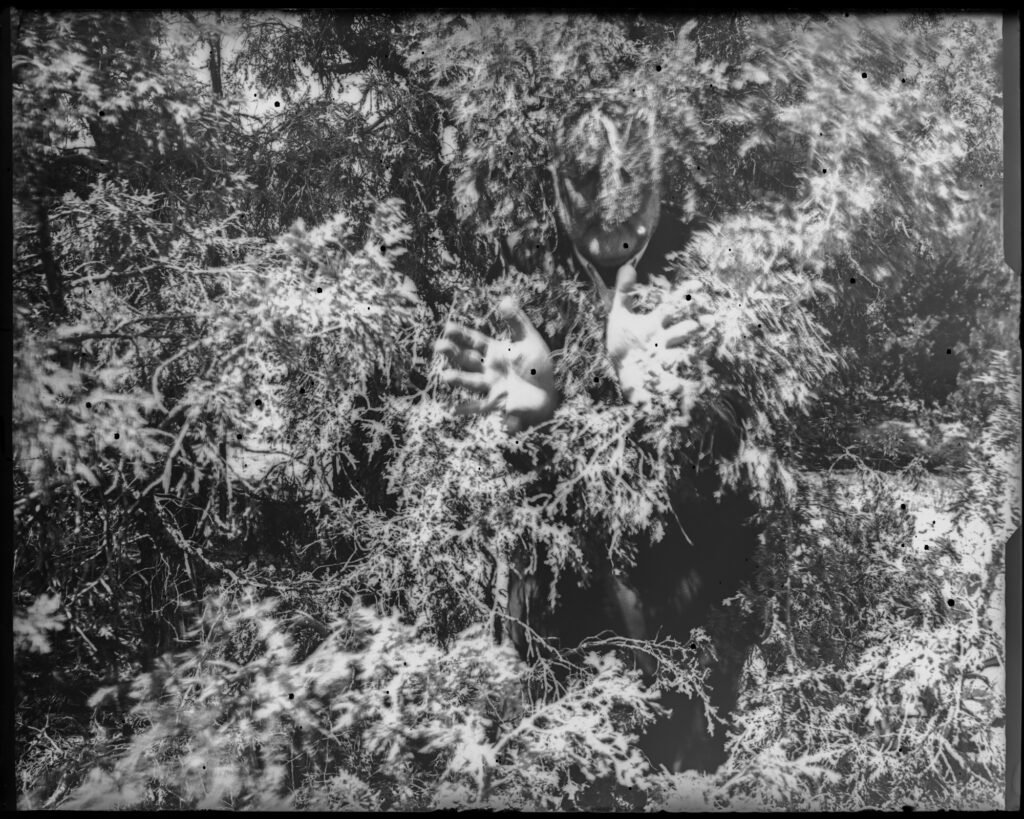
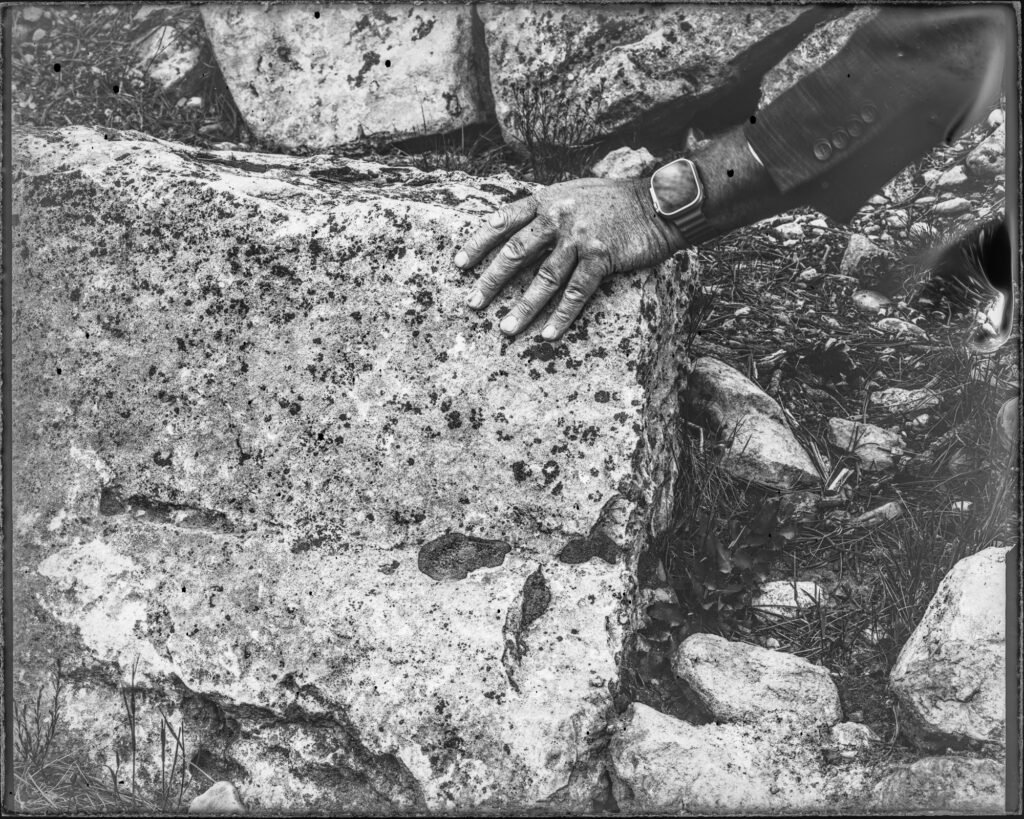
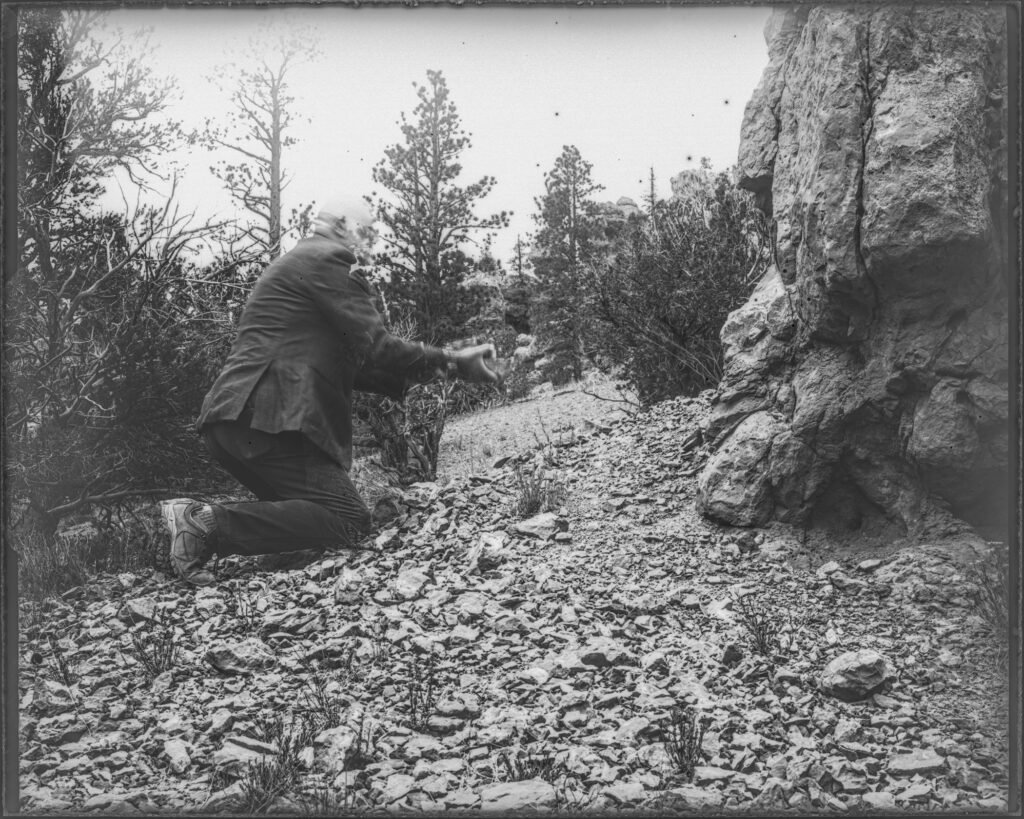
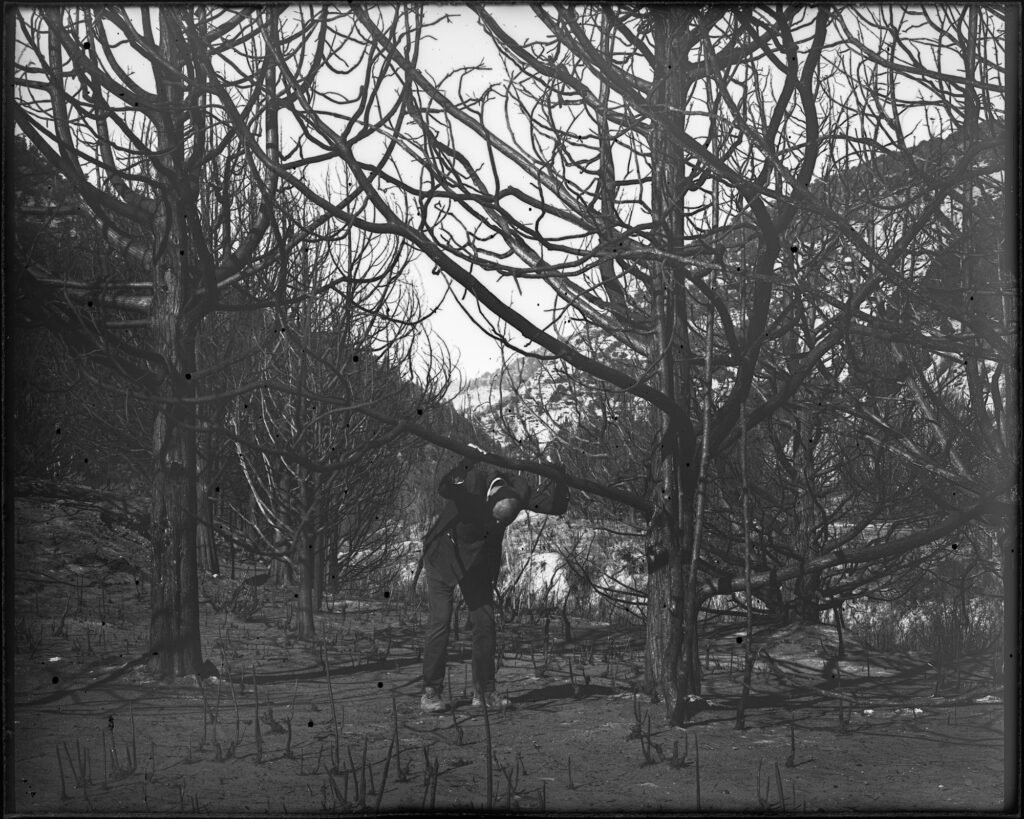
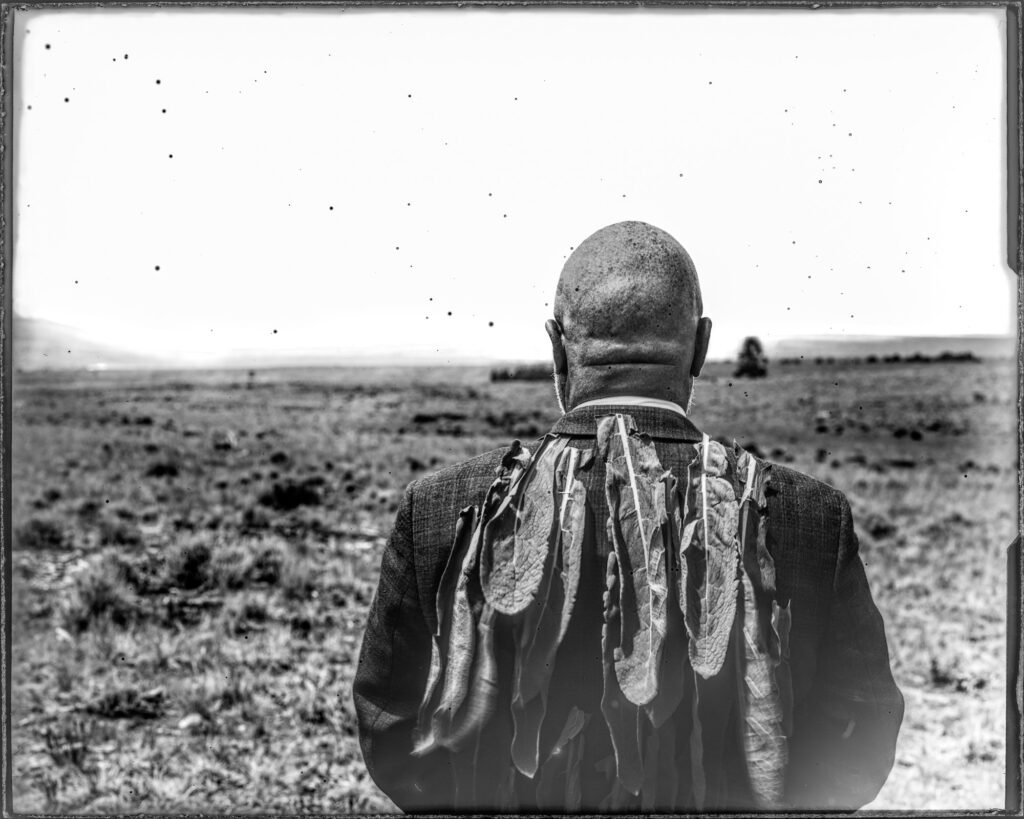
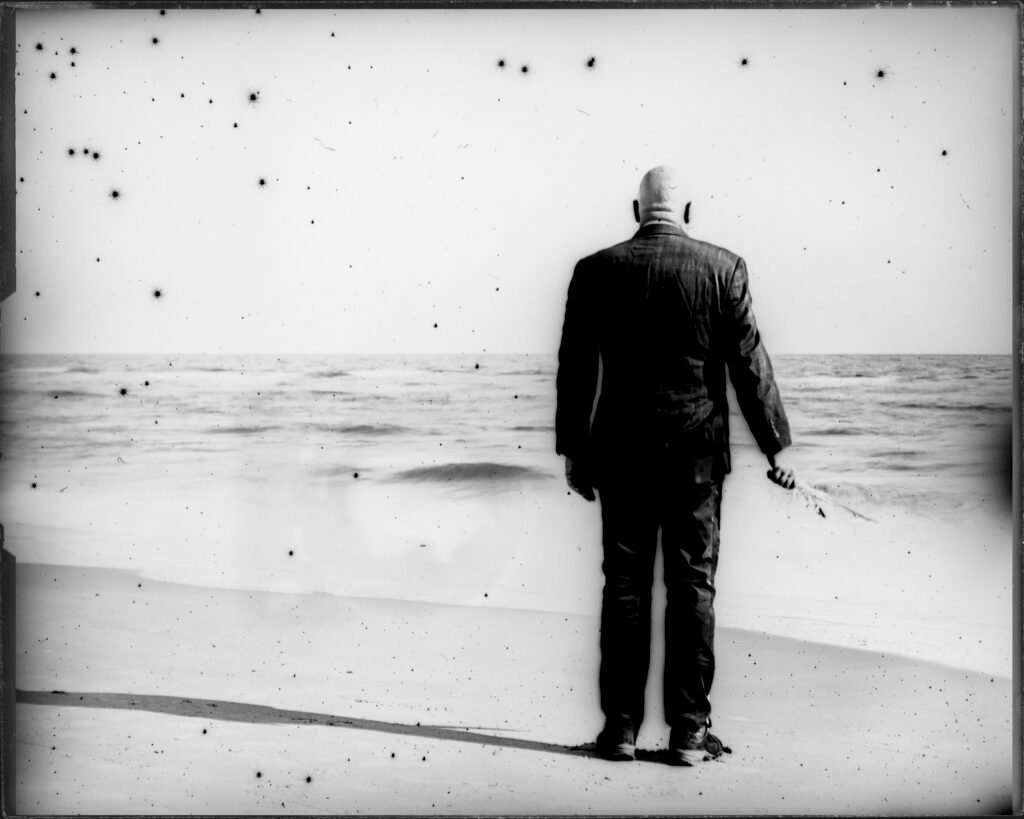
Echoes of Self will be presented in a series of chapters of 15 – 20 photos each:
Echoes of Self – Travel Memories
Echoes of Self – Whispers of Dreams
Echoes of Self – Ties that Bind
Echoes of Self – Silent Horizons
Echoes of Self – Traces of Belonging
Echoes of Self – Reflection of Tomorrow
Echoes of Self – The Pulse of Nature
Reflections of Tomorrow is the newest chapter in Ton Schless’s ongoing project Echoes of Self, a seven-part exploration of memory, identity, and the passage of time in search of his Ikigai. Created with a 4×5″ large-format camera and hand-coated dry plates, the series continues his dialogue with nature as a mirror for the self.
Where earlier chapters trace what has been, memory as root, echo, and anchor, this body of work turns toward what is yet to come. Tomorrow remains unwritten, its shape only glimpsed in fragments: a shoreline at dawn, feathers held against the horizon, the body dissolving into water or air. These images inhabit the threshold between presence and possibility, balancing the weight of lived memory with the uncertainty of becoming.
Each photograph stands as both question and reflection: What does it mean to carry memory forward? How does identity shift in the face of impermanence? And how might purpose be found not in permanence but in the unfolding cycles of belonging, loss, and renewal?
In placing himself at the edge of tomorrow, Schless embraces uncertainty as part of his Ikigai, an openness to dissolve and to begin again. Reflections of Tomorrow does not predict the future but dwells in its potential, where identity, memory, and time meet in fragile, luminous metaphors.
September 2025
In Traces of Belonging, Ton Schless investigates the subtle negotiations between memory, identity, and place through a series of self-portraits in search of his Ikigai, life’s purpose. This chapter, part of his larger project Echoes of Self, employs the slow, meditative process of hand-coated 4×5″ dry plate photography to reflect on how belonging is both inherited and created.
The images appear as a visual tribute, starting with offerings and respectful gestures toward ancestral sites, then moving into landscapes defined by absence, burden, and change. Whether kneeling before a stone altar or carrying a rock across burned ground, the artist’s body becomes a vessel of memory, anchored in gesture, presence, and vulnerability.
Yet Traces of Belonging is not only about loss. Through acts of planting, resting, and listening, the series moves toward restoration and quiet joy. A branch growing from his back, leaves worn like a cloak, or ears formed of foliage evoke the metaphoric integration of body and land. Here, belonging is no longer a destination but a relational state, an evolving conversation with nature, time, and self.
Schless’s use of natural metaphors and imperfections in the glass plates highlights the project’s main idea: that belonging isn’t fixed or perfect, but layered, imperfect, and deeply felt. This work asks: Where do we go back to when we search for ourselves? The answer, gently given, is not in owning a place, but in how we move through it, touch it, and let it shape us in return.
August 2025
In Silent Horizons, a chapter of the larger Echoes of Self project, Ton Schless presents a meditative body of self-portraiture that examines the intersection of identity, memory, and the temporal experience of being. Created through the historical 4×5-inch dry plate process, these images utilize the landscape as a reflective surface, one that mirrors the artist’s ongoing search for Ikigai. This Japanese concept embodies life’s purpose and meaning.
The series invites engagement through its rich layering of metaphors. Each portrait is set in an expansive natural environment where stillness becomes a site for introspection and transformation. Schless’s use of light, gesture, and elemental textures emphasizes the subtle emotional terrain navigated within each frame. The horizon functions not as a destination but as a liminal space, where the boundaries between self and environment blur, and where inner contemplation meets outer expanse.
Silent Horizons presents viewers with a cohesive and conceptually rigorous project that possesses both visual and emotional resonance. Its themes of quiet resilience, existential reflection, and personal mythology create fertile ground for dialogue about identity and temporality in contemporary photographic practice in search of Ikigai.
May 2025
In the Ties that Bind chapter, Ton Schless presents a series of self-portraits that investigate the unseen forces shaping identity, memory, and the passage of time. Working with the performative possibilities of the photographic medium, Schless explores his search for ikigai, a deep-rooted Japanese concept of life’s purpose that serves as both an anchor and a compass in a shifting world.
Each image is constructed through deliberate physical engagement, placing the artist’s body within natural landscapes that serve as both metaphor and stage. Gestures, shadows, and the interplay of stillness and motion form a visual language that facilitates internal transformation. These compositions transcend self-representation, presenting a layered narrative of vulnerability, endurance, and quiet renewal.
Schless’s work engages with the broader discourse on self-portraiture and environmental context, making Ties that Bind well-suited for exhibitions examining identity, time-based practice, and the intersection of the human and natural worlds. This series invites dialogue about how personal mythology and embodied experience reflect universal human themes, connection, grounding, and meaning, within the contemporary condition, inviting the viewer to contemplate their Ikigai.
May 2025
Whispers of Dreams, the second chapter of Echoes of Self, traces the delicate echoes of nocturnal reverie and the fleeting nature of memory. In this body of work, Ton Schless presents a series of introspective self-portraits that explore how dreams, though ephemeral, leave lasting impressions on identity and inner purpose.
Each image reflects the tension between the dream world’s vivid, often surreal intensity and the quiet stillness of waking life. As these impressions dissolve with the morning light, their emotional resonance lingers, calm, persistent, and deeply personal. Schless uses natural metaphors and the historic dry plate process to render these inner visions with poetic fragility, drawing viewers into moments suspended between presence and absence.
Whispers of Dreams invites reflection on the power of unseen inner experiences, those subtle, transient glimpses that shape an individual’s ikigai and sense of self. Honoring what is easily forgotten, the series suggests that the most fleeting images may carry the most significant meaning.
December 2024
In Travel Memories, Ton Schless reflects on a lifetime of business journeys that have quietly shaped his personal narrative. This chapter explores the intersection of professional ambition and inner transformation, using self-portraiture to chart a path through the physical and emotional landscapes encountered along the way. Set against a backdrop of diverse terrains, from frenetic cityscapes to isolated expanses of stillness, each image captures the complex duality of travel: its outward motion and its inward pull.
Employing the 4×5″ dry plate process, Schless slows time to revisit fleeting moments of connection, disorientation, and revelation. The series contemplates how movement through the world leaves behind subtle imprints, both in place and in self, revealing the tension between achievement and introspection, solitude and connection.
Rather than viewing these journeys solely as professional milestones, Travel Memories positions them as pivotal points of self-examination. In doing so, it invites viewers to consider how the rhythms of work and the search for purpose often unfold simultaneously, shaping identity with every border crossed. This chapter stands as a quiet homage to the transformative nature of travel and the enduring resonance of the places we pass through and the versions of ourselves we leave behind.
August 2024